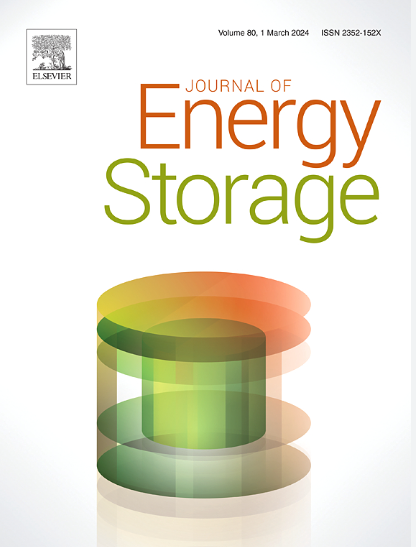Investigation of PCM cooling saving potential under variable building envelope structures and Chinese climatic regions
IF 8.9
2区 工程技术
Q1 ENERGY & FUELS
引用次数: 0
Abstract
The integration of PCM (phase change material) into building envelopes has been proven as an effective strategy for maintaining indoor thermal comfort and reducing building energy demand. However, the performance of PCM critically depends on the PCM position within the envelope, the original wall components, the phase transition temperature and the climatic conditions. In this study, the cooling saving performance of PCM for a two-story building in Hong Kong was optimized using Energy Plus, focusing on the impact of envelope component materials and their optimal arrangement order. Additionally, the optimal phase transition temperature under variable indoor temperatures and seasons was studied to optimize PCM performance. Then, the cooling savings of PCM were evaluated in different Chinese climate zones. Key findings revealed that arranging the PCM layer on the interior side of the insulation layer effectively extends the phase transition time and enhances cooling saving performance. Secondly, the application of PCM can increase the thermal mass of lightweight wallboards to yield significant cooling savings ratio up to 18 %, while that is decreased to 2.5 % in the heavyweight wallboards. Moreover, increasing the insulation thickness reduces the cooling saving of PCM. However, PCM still retains a certain level of effectiveness, as it can absorb the heat gains caused by solar radiation and other internal heat sources. Thirdly, it was found that the phase transition temperature should align with the desired indoor thermostat temperature, regardless of ambient temperature. For the regional analysis, cities with larger diurnal temperature ranges, such as Wuhan and Kunming, exhibit higher cooling energy savings potential. Coastal cities like Hong Kong and Shanghai showed less prominent cooling saving benefits.

不同建筑围护结构和中国气候条件下PCM节能潜力的研究
将相变材料集成到建筑围护结构中已被证明是保持室内热舒适和减少建筑能源需求的有效策略。然而,PCM的性能主要取决于PCM在包络层内的位置、原始壁组分、相变温度和气候条件。本研究利用Energy Plus对香港一幢两层建筑的PCM节能性能进行了优化,重点研究了围护结构组件材料的影响及其最佳排列顺序。此外,还研究了不同室内温度和季节条件下的最佳相变温度,以优化相变材料的性能。在此基础上,对中国不同气候带下PCM的降温节约量进行了评价。研究结果表明,在保温层的内侧布置PCM层可以有效地延长相变时间,提高节能性能。其次,PCM的应用可以增加轻质墙板的热质量,从而产生高达18%的显著冷却节省率,而在重型墙板中则下降到2.5%。此外,增加绝缘厚度会降低PCM的冷却节省。然而,PCM仍然保持一定程度的有效性,因为它可以吸收太阳辐射和其他内部热源引起的热量增益。第三,发现无论环境温度如何,相变温度应与期望的室内恒温器温度一致。从区域分析来看,日温差较大的城市如武汉和昆明表现出更高的制冷节能潜力。香港和上海等沿海城市的降温节能效果则不那么明显。
本文章由计算机程序翻译,如有差异,请以英文原文为准。
求助全文
约1分钟内获得全文
求助全文
来源期刊

Journal of energy storage
Energy-Renewable Energy, Sustainability and the Environment
CiteScore
11.80
自引率
24.50%
发文量
2262
审稿时长
69 days
期刊介绍:
Journal of energy storage focusses on all aspects of energy storage, in particular systems integration, electric grid integration, modelling and analysis, novel energy storage technologies, sizing and management strategies, business models for operation of storage systems and energy storage developments worldwide.
 求助内容:
求助内容: 应助结果提醒方式:
应助结果提醒方式:


